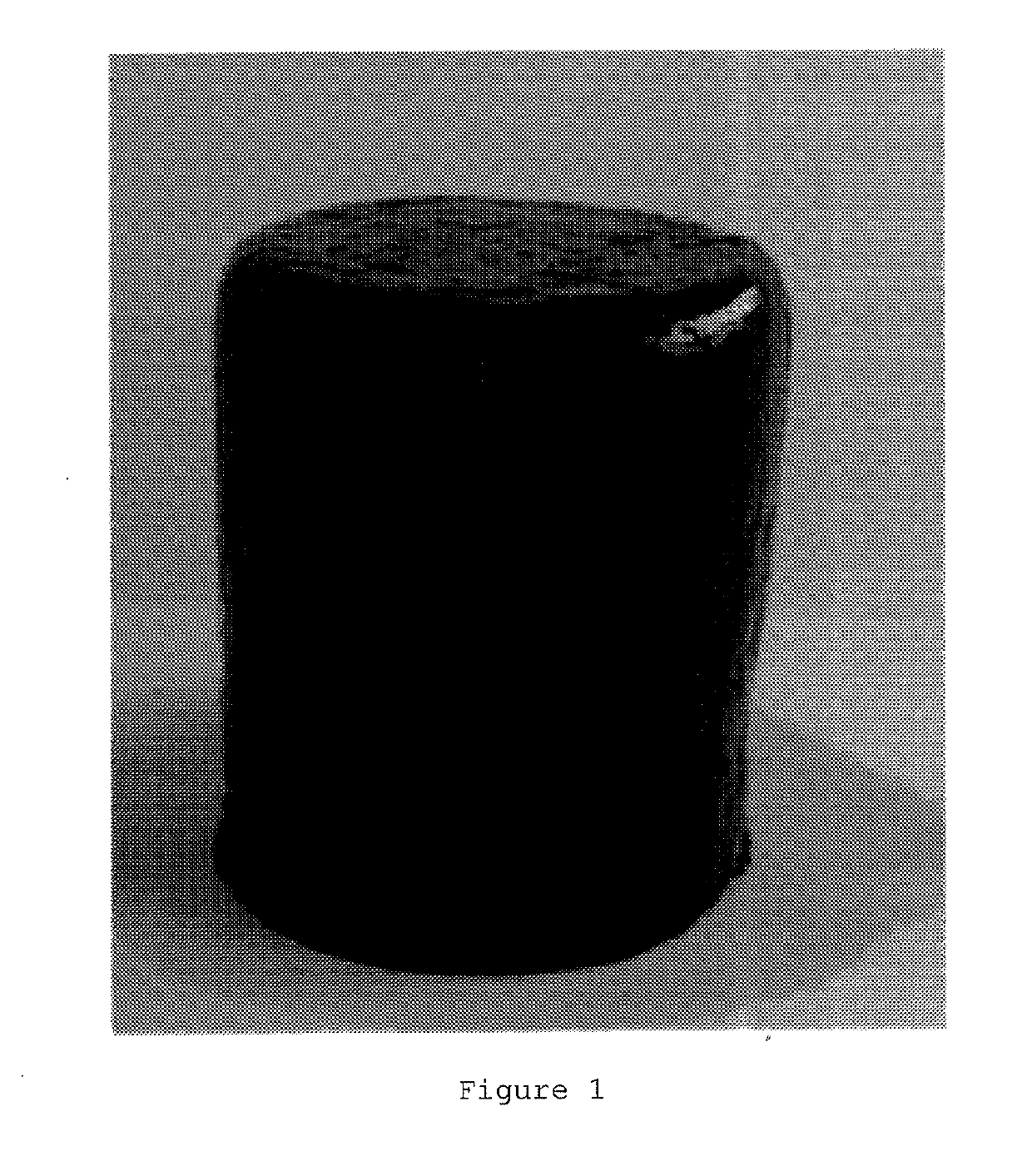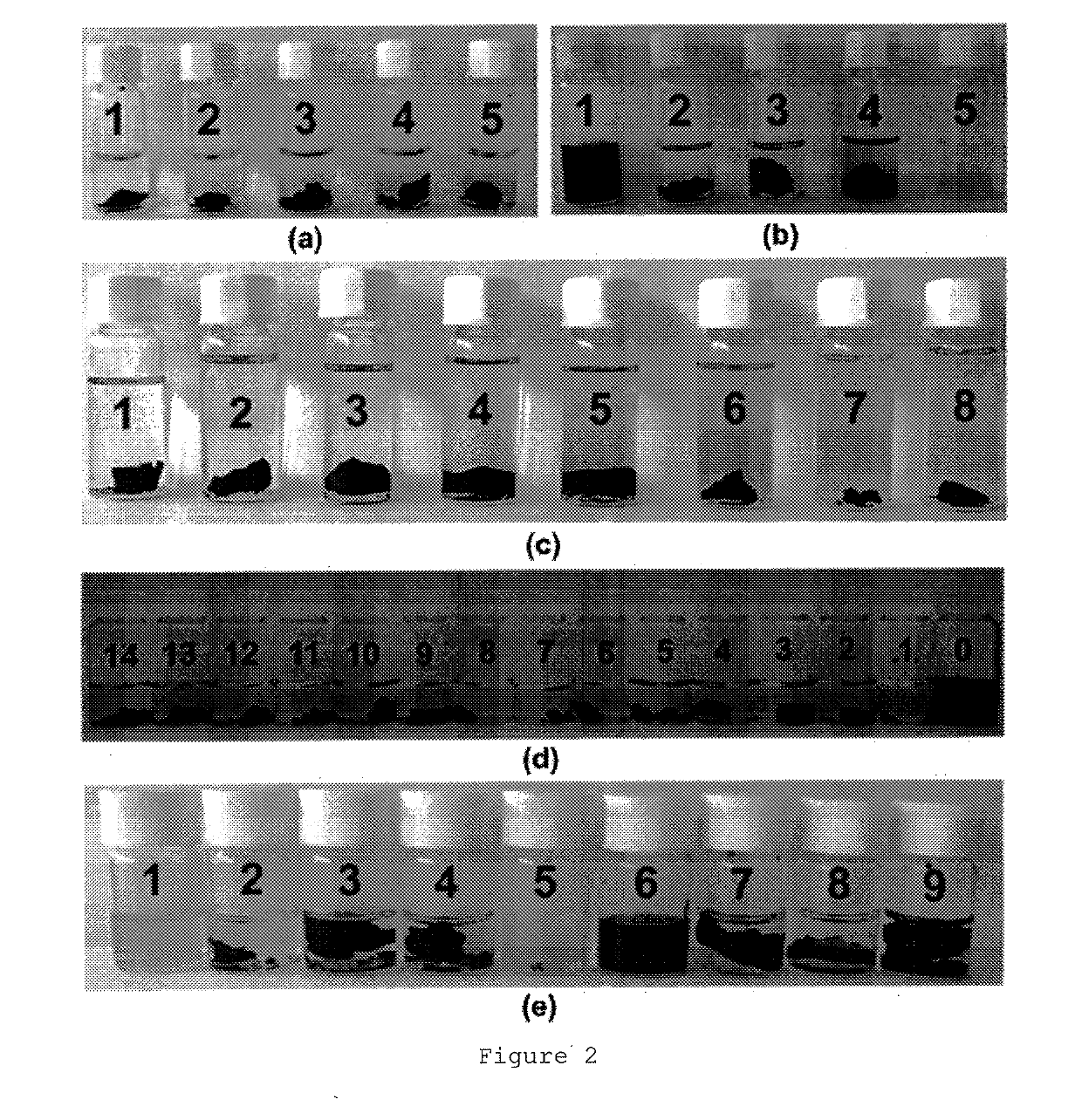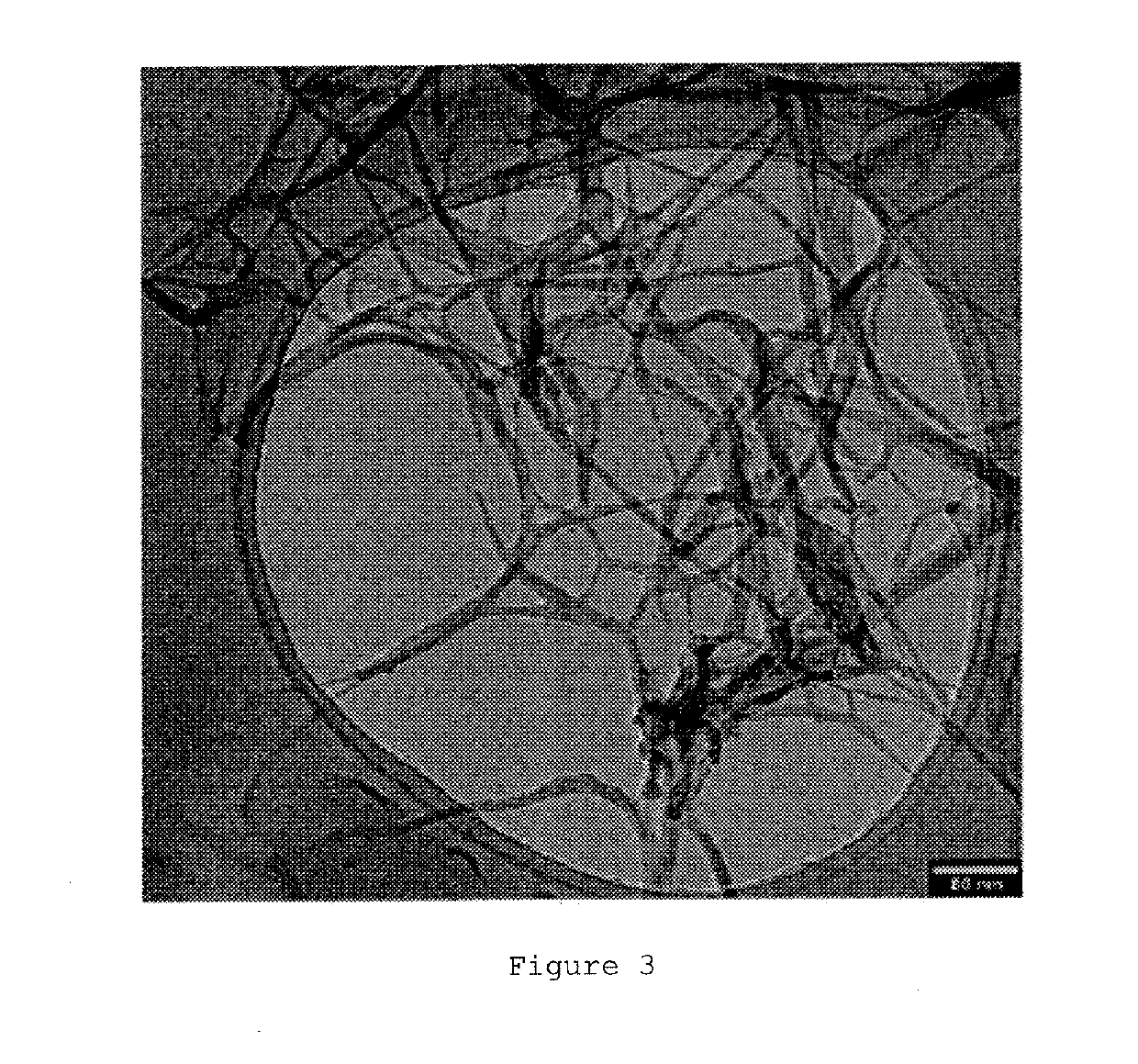Metal-organic gels and metal-organic aerogels formed from nanofibres of coordination polymers
a technology of coordination polymer and metal organ gel, which is applied in the direction of physical/chemical process catalysts, supercritical conditions, other chemical processes, etc., can solve the problems of material forming in a post-synthesis step, pore size reduction, and restricted applications, etc., to achieve strong coordination bond, improve properties, and facilitate production
- Summary
- Abstract
- Description
- Claims
- Application Information
AI Technical Summary
Benefits of technology
Problems solved by technology
Method used
Image
Examples
example 1
Preparation of a Ni-DTO Metal-Organic Gel
[0109]0.933 g of Ni(OAc)2 were dissolved in 48 mL of DMF / DMA (60:40 vol:vol) with the help of a sonic tip at 80% its power for 2 minutes. The ligand solution was prepared by dissolving 0.451 g of dithiooxamide in 2 mL of DMF / DMA (60:40 vol:vol) together with 523 μL of triethylamine. The dithiooxamidate ligand solution was added at once to the metal dispersion. This addition process was performed in an ultrasonic bath (ULTRASONS-H, Selecta) at a temperature of 15° C. until a change in the viscosity of the samples was visually observed (5 minutes). Once the metal-organic gel acquired the suitable consistency, it was left at room temperature for a day.
[0110]The sample was washed according to the following method: first the metal-organic gel was immersed in DMF to remove unreacted species (24 h) and washes with DMF / ethanol mixtures were then performed (every 24 h). Finally, exchange with pure ethanol was performed (24 h).
[0111]FIG. 4a (left) corr...
example 2
Preparation of an Ni-DTO Metal-Organic Xerogel
[0112]The corresponding xerogel was prepared by leaving the metallogel produced in Example 1 to dry at room temperature and pressure. The results are shown in FIG. 4b.
example 3
Preparation of an Ni-DTO Metal-Organic Aerogel
[0113]The corresponding aerogel was prepared using a Quorum Technologies® E3100 supercritical drying equipment equipped with gas inlet valves, venting valves and purge valves, and a thermal bath. The metal-organic gel produced following the method of Example 1 was first immersed in liquid CO2 at 20° C. and 50 bar for one hour. After that, ethanol was removed through the purge valve. This process was repeated five times. The sample was then dried in supercritical conditions by increasing the temperature and pressure to 38° C. and 85-95 bar, respectively. Finally, the chamber was slowly vented to atmospheric pressure, keeping it at a constant temperature (38° C.)
[0114]FIG. 4c shows the optical image and the electron microscopy image corresponding to an Ni-DTO aerogel synthesized according to the method described in this example.
[0115]From the images shown in FIG. 4, a highly porous structure consistent with the high pore volume value (3.0 ...
PUM
| Property | Measurement | Unit |
|---|---|---|
| Percent by mass | aaaaa | aaaaa |
| Percent by mass | aaaaa | aaaaa |
| Diameter | aaaaa | aaaaa |
Abstract
Description
Claims
Application Information
 Login to View More
Login to View More - R&D
- Intellectual Property
- Life Sciences
- Materials
- Tech Scout
- Unparalleled Data Quality
- Higher Quality Content
- 60% Fewer Hallucinations
Browse by: Latest US Patents, China's latest patents, Technical Efficacy Thesaurus, Application Domain, Technology Topic, Popular Technical Reports.
© 2025 PatSnap. All rights reserved.Legal|Privacy policy|Modern Slavery Act Transparency Statement|Sitemap|About US| Contact US: help@patsnap.com



